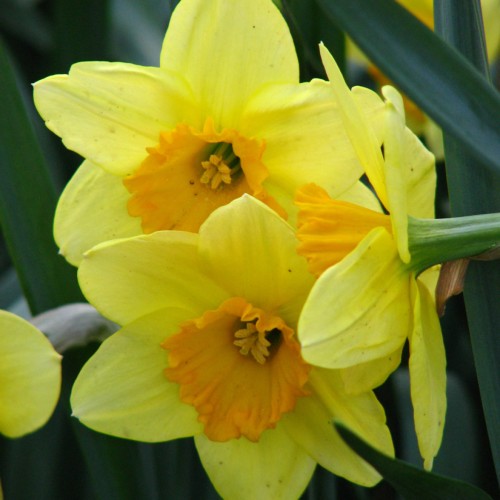
large-cupped daffodil
Narcissus 'Polbathic'
Cycle:
Perennial
Watering:
Average
Hardiness Zone:
3 - 8
Flowers:
Flowers In Spring
Sun:
Full sun,part shade
Leaf:
Yes
Growth Rate:
High
Maintenance:
Low
Drought Tolerant:
Yes
Care Level:
Medium
watering
Large-cupped daffodil (Narcissus 'Polbathic') should be watered deeply once per week in spring and once a month in summer and fall. Watering should be increased during dry spells. Make sure you water to a depth of at least 6 inches (15 cm) and water enough so that the entire root zone is saturated. It is generally best to avoid overhead watering as it can lead to fungal problems. Allow the soil to dry out slightly between waterings. If the soil dries out too much between waterings, the blooms may not be as large.
sunlight
Large-cupped daffodil (Narcissus 'Polbathic') should be grown in full sun for at least 4 to 5 hours each day. Early morning and late afternoon are ideal for maximum blooms and growth. This plant species performs best in well-drained soil, and should be fertilized in the early spring for continued growth. Bulbs should be planted in the fall approximately 4 to 6 weeks before the last frost of the year and should be spaced at a minimum of 4 inches apart. This species is also compatible with many other perennials and annuals, making it a great addition to any garden.
pruning
Pruning of the large-cupped daffodil (Narcissus 'Polbathic') should take place soon after flowering has finished, and should include the removal of spent blooms and foliage. The leaves and stems should be cut down to the base of the plant. This will ensure that the plant is healthy for next year's show. Pruning will also help to open up the center of the daffodil, allowing air and sunlight to reach more of the blooms. It is important to keep the clumps of daffodils within the pot or garden bed to retain their form. If necessary, after pruning, they can be divided into smaller clumps to give more definition to their shape and provide additional blooms.
